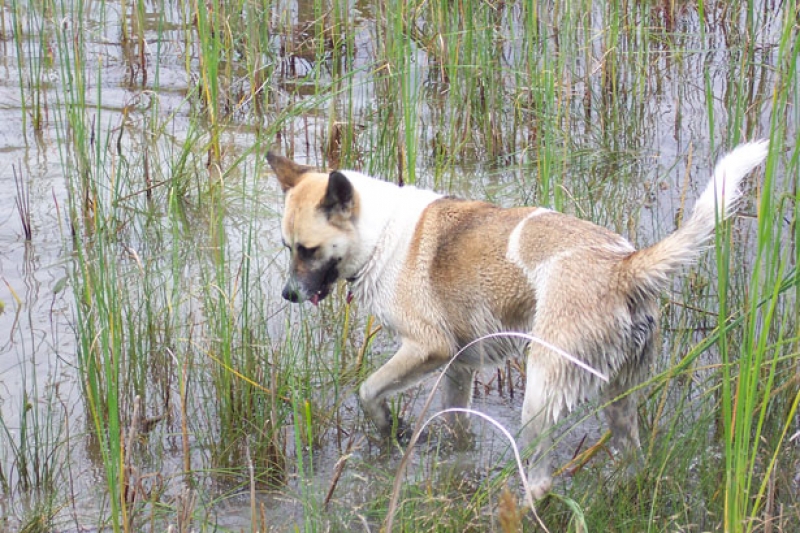A Dogs Tail
27th October 2016
Dogs are known for their tails but many owners are unaware that these furry masses of bone serve multiple purposes.
The canine tail usually consists of between six and twenty-three highly mobile vertebrae. These vertebrae are encased in muscles that make the various segments, especially the tip, capable of finely graded movements that lift the tail, move it from side to side, or draw it down between the hind legs.
A dog’s tail is mostly used as counterbalance when the dog is carrying out complicated movements such as leaping, walking along narrow structures or climbing. Dogs that run at great speeds often have thin tails that are very long in proportion to the rest of their body. Some dogs use their tails as rudders when swimming and those bred for swimming frequently have tails that are thick, strong and very flexible, which helps them to move easily through the water and make quick turns. Other breeds like Nordic group dogs can even use their tails for insulation and have bushy or plumed tails with long dense fur for this purpose. When lying down they may even pull their tails over their faces to keep out the cold.
Over time, the canine tail had also adapted itself to playing a vital role in communication. Dogs express happiness, aggression, stress and many other emotions with their tail. When a dog holds their tail high and wags it back and forth, they are usually feeling pretty good. When they are interested in something, their tail may be horizontal to the ground but if it moves from horizontal to upright and becomes rigid, they could be feeling threatened. A dog that is worried or insecure may have a tail that is low and wagging while a tucked tail indicates the dog is frightened or submissive.
Dogs also wag their tails to spread their natural scent from their anal glands. Each dog has a scent that’s as unique to them as fingerprints are to us. An "alpha" or dominant dog that carries their tail high will release more of their scent. Likewise, a frightened dog will hold their tail between their legs to keep others from sniffing them.
So, if the tail plays such an important role what happens if it’s removed? The docking of dogs’ tails is a practice which has been carried out for centuries in order to avoid tail damage, for hygiene and other reasons. Today there are over fifty traditionally docked breeds which are recognised by various kennel clubs. But for some breeds it was proposed primarily to improve appearance and has, in recent years, come under scrutiny.
According to the Australian Veterinary Association (AVA) the precautionary removal of the tail of a young puppy needs to be based on compelling evidence that the animal is at high risk of tail trauma due to congenital defect, breed and/or planned working activity. Carrying out a docking surgery for the sake of appearance implies the procedure is not medically indicated and this is insufficient justification for performing such a practice.

